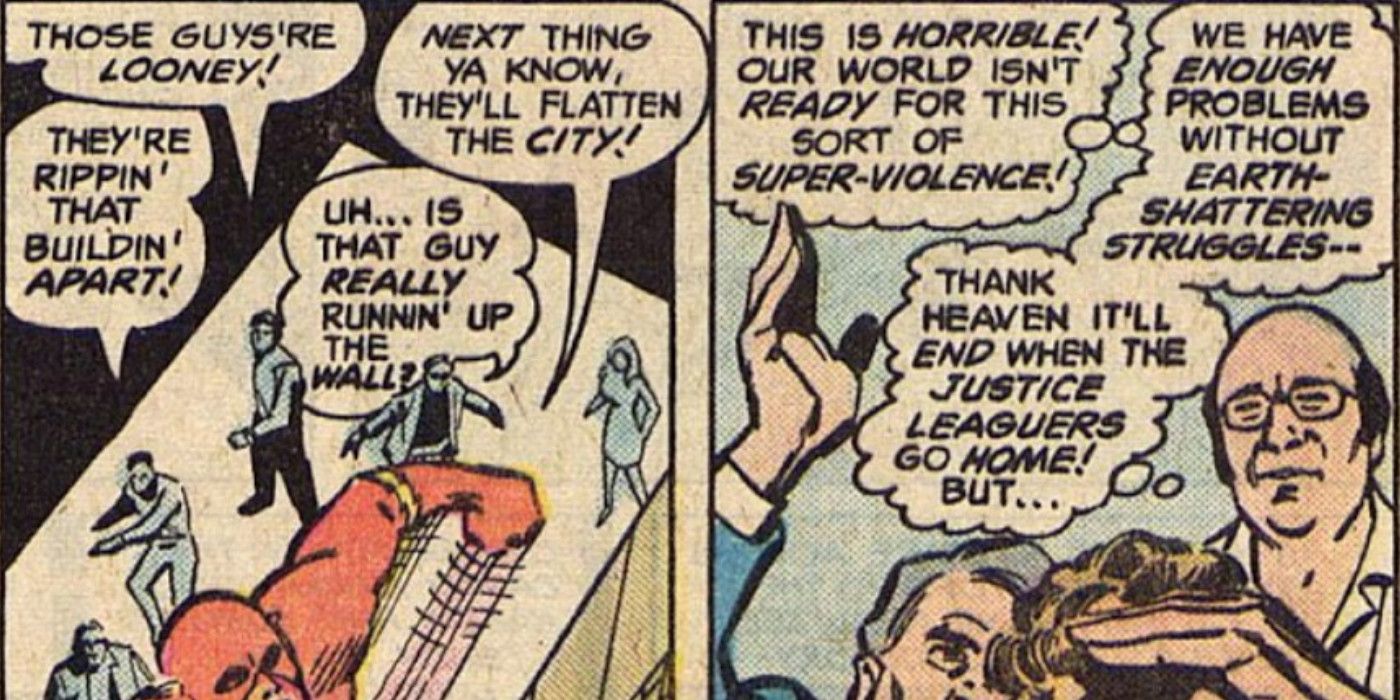Almost all of the Earths in DC’s multiverse have super-powered beings, but there is one world that is better off without them, and a visit from the Justice League demonstrates why. In 1978’s Justice League of America #153, written by Gerry Conway with art by George Tuska, the League travels to Earth-Prime, drawn there by the emergence of that Earth’s first super-powered hero—and the results are disastrous.
In the mid-1950’s, during comics’ Silver Age, DC began revamping their stable of heroes from the Golden Age, dusting them off and giving them science fiction makeovers. Outside of similarities in powers, these new versions of Green Lantern and the Flash bore little resemblance to their Golden Age counterparts—they had new costumes and new secret identities. In the early 1960s, writer Gardner Fox invented a way to explain the differences between characters: The Silver Age heroes, such as Barry Allen, Hal Jordan, and Ray Palmer, all existed on Earth-One, and the Golden Age characters, such as Jay Garrick and Alan Scott, existed on Earth-2. From there, the multiverse grew: DC introduced Earth-3, where all the superpowered characters were villains in a team called the Crime Syndicate; Earth-X, home of characters acquired from Quality Comics; Earth-S, home of Shazam; and finally there was Earth-Prime, which was a stand-in for the real Earth. This world had no superheroes of its own, and the likes of Batman, Green Arrow, and the Flash only exist in comic books.
Earth-Prime finally did get its first super-powered champion, a human named Ultraa. Ultraa’s arrival on Earth-Prime mystically drew the Justice League there. In an incredibly meta moe, the team seeks out the help of DC editor Julius Schwartz. After meeting with Schwartz, the League breaks up a bank robbery in progress—but the bystanders, not knowing these are actual super-heroes, think a movie is being filmed. As Schwartz watches the League struggle to control the situation, he muses this world is better off without superheroes.
Meanwhile, Utlraa has drawn the attention of not only the United States military, but also an invading alien force. Ultraa meets the Justice League, who mistake him for a villain, and as the League fights Ultraa, the horrified Air Force pilots cannot believe what they are seeing. The two sides realize they are not enemies and return to Pearl Harbor to begin repairing the damage caused to the planes. An already nervous general is becoming even more unhinged at the damage they caused, as well as the implications of their existence. Ultraa concludes that his presence on Earth-Prime is causing more harm than good and decides to leave. The League follows suit and Green Lantern uses his ring to erase memories of their time on that Earth.
Both Ultraa and Julius Schwartz were right: Earth-Prime was not ready for superheroes, and the events of this issue showed why, and in the process provided a commentary on heroes in the real world—a little under a decade before Watchmen spun this theme into gold. No incident better illustrates this than the Justice League’s attempt at foiling a robbery; it went so poorly it led a comic book editor to conclude his Earth was better off without superheroes.
The irony of the situation was fully realized during the Crisis on Infinite Earths, when Earth-Prime got its very own Superman—but was destroyed right after. On any Earth that he exists, Superman’s arrival signals the beginning of a heroic age—so who knew what the future held for Earth-Prime? But for most of its existence, Earth-Prime was a world without heroes—and it was better off that way.


